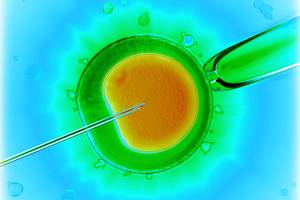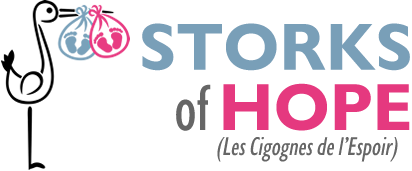What is egg donation?

Oocyte donation, or egg donation, (more precisely in vitro fertilisation with egg donation) is a method of assisted reproduction (IVF) that was developed in the 1970s and has been authorised in the UK since 1991.
As its name suggests, in simple terms, it is a medically assisted reproduction technique whereby eggs are taken from a fertile woman after medical ovarian stimulation and ‘donated’ to an infertile woman.
What are oocytes?
Oocytes (or Eggs) are the female reproductive cells (female gametes). Every woman has thousands of female reproductive cells or eggs (known as the ovarian reserve) in her ovaries. From puberty onwards, every month, around ten of these eggs develop and ‘mature’ to become fertilisable. Only one of these eggs can be fertilised each month by a sperm: forming the zygote. The number and quality of eggs produced decreases with age. When the number and quality of eggs become insufficient to be fertilised, we describe this as ‘ovarian insufficiency’.
The oocyte donor: choice and preparation
The gamete donor must undergo medical ovarian stimulation treatment for about a month in order to stimulate and increase the production of eggs. During this period, she must be monitored by frequent ultrasounds and blood tests.
The choice of donor is based in so far as possible on the physical characteristics of the recipient couple. This is certainly the case in specialist IVF clinics in the UK and abroad.
The egg donor must meet a certain number of criteria, including undergoing medical examinations (conditions vary from country to country) to eliminate any risk of infectious diseases, and checking her karyotype and ovarian reserve.
The recipient, for her part, undergoes medical treatment to prepare her endometrium to receive an embryo and carry a pregnancy to term.
Egg donation technique
When the eggs have reached maturity, they are retrieved from the donor under general or local anaesthetic.
These eggs are fertilised with sperm from the recipient's male partner (or from a donor) using in vitro fertilisation (IVF).
Fresh or frozen eggs can be used for this treatment. New techniques are making it possible to achieve equivalent or even higher pregnancy rates with frozen eggs than with fresh eggs, but these new techniques are not yet available in all countries.
After culture in an incubator containing a culture medium that encourages embryo development, the most mature embryos (normally 1 or 2) are transferred into the recipeint's uterus. This occurs between 3 and 5 days after fertilisation (the ‘blastocyst’ stage) when the embryos have reached the size of 4 to 8 cells.
Success rate of egg donation
This reproductive technique gives very good results. Success rates depend on the quality of the donor's eggs, the quality of the male partner's sperm, the capacity of the woman's uterus to receive an embryo and carry a pregnancy to term, but also increasingly on the quality of the equipment and the medical skills of the clinic providing IVF treatment with egg donation. The pregnancy rate is currently between 65% and 75% in the best-performing foreign clinics. This is a remarkable rate, especially considering that in the human species, the probability of conceiving naturally in fertile individuals is between 20% and 30%.

